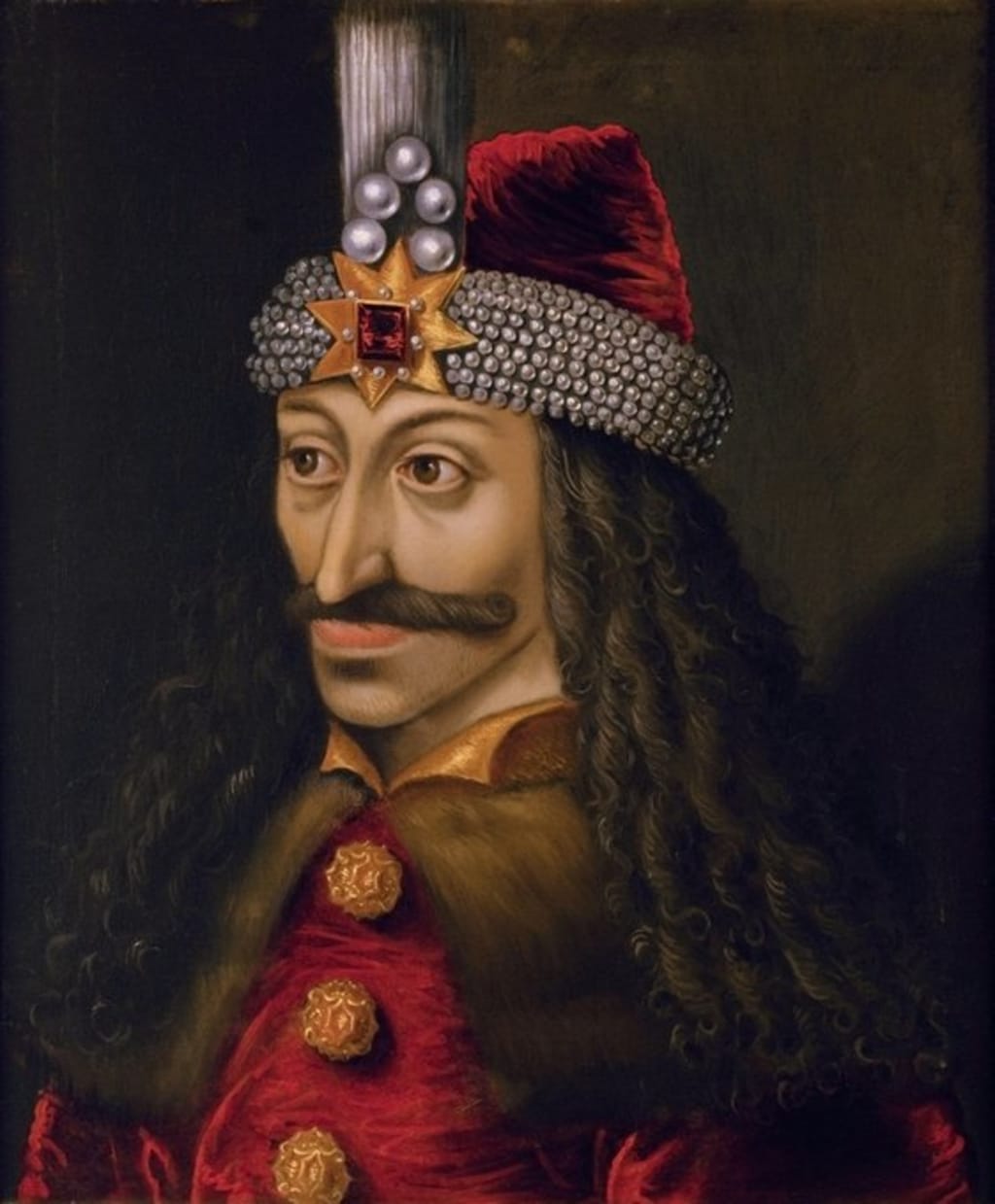Vlad the Impaler
The Prince of Wallachia and His Reign of Terror

In the annals of history, few figures are as synonymous with cruelty and terror as Vlad III, Prince of Wallachia, more commonly known as Vlad the Impaler. Ruling in the 15th century, Vlad's reign is remembered for its extreme brutality and the ruthless methods he employed to maintain power and control over his domain. Among these methods, impalement was his preferred form of execution, a gruesome technique that he used on tens of thousands of his enemies. These included captured soldiers, criminals, and political rivals, all of whom met a horrific end at the hands of Vlad's men.
Vlad's ascent to power came during a tumultuous period in Wallachia's history. Born in 1431, he was the son of Vlad II Dracul, a member of the Order of the Dragon, a chivalric order dedicated to defending Christendom against the Ottoman Turks. The young Vlad was exposed to violence and political intrigue from an early age, experiences that would shape his approach to rule. After being held hostage by the Ottomans as a child, he developed a deep-seated hatred for his captors, which later fueled his relentless campaigns against them.
When Vlad took the throne of Wallachia in 1448, he faced a region fraught with internal strife and external threats. Determined to consolidate his power and establish order, he embarked on a campaign of terror against those he deemed enemies of the state. His use of impalement was not just a method of execution but a tool of psychological warfare designed to instill fear and compliance among his subjects and adversaries alike.
Impalement involved driving a wooden stake through the body of a victim, often leaving them to die a slow and agonizing death. This gruesome method was used extensively by Vlad to punish and deter. It is estimated that he ordered the impalement of tens of thousands of people during his reign. Entire villages were impaled as a stark warning to others, serving as a brutal reminder of the consequences of defiance. These macabre displays were not only meant to eliminate immediate threats but also to prevent future insurrections and invasions by creating an atmosphere of dread.
One of the most infamous episodes of Vlad's reign occurred in 1462 when the Ottoman Sultan Mehmed II sent an army to invade Wallachia. Anticipating the invasion, Vlad implemented a scorched earth policy, destroying crops and poisoning wells to deprive the advancing Ottoman forces of supplies. As the Ottomans approached the capital, they were met with a ghastly sight: a forest of impaled bodies stretching for miles. This spectacle of death, known as the "Forest of the Impaled," horrified and demoralized the invaders, exemplifying Vlad's use of psychological terror to defend his realm.
Vlad's ferocity extended beyond his military campaigns. He was equally ruthless in dealing with domestic issues, using impalement to punish crimes ranging from theft to political dissent. His harsh justice system was designed to eradicate corruption and crime, creating a climate of fear that kept his subjects in line. While these methods were effective in maintaining order, they also earned Vlad a fearsome reputation across Europe. Reports of his cruelty spread, painting him as a tyrant whose barbarity knew no bounds.
Despite his notoriety, Vlad's reign was not without its supporters. Many of his contemporaries viewed him as a strong and decisive leader who defended his country against the encroaching Ottoman Empire. His brutal tactics, while horrifying, were seen by some as necessary measures to ensure the survival and independence of Wallachia. This duality in perception contributed to the complex legacy he left behind.
Vlad's story took on a new dimension in the 19th century when Irish author Bram Stoker drew inspiration from his life for his gothic novel, "Dracula." Published in 1897, "Dracula" introduced the world to Count Dracula, a vampire whose sinister and bloodthirsty nature mirrored the historical accounts of Vlad the Impaler's cruelty. Stoker's novel, while fictional, cemented Vlad's association with the vampire legend and popularized his image as a creature of the night. This literary transformation ensured that Vlad's legacy would endure, blending historical fact with supernatural fiction.
The real Vlad the Impaler, however, was a far more complex figure than the vampire mythos suggests. His reign was marked by a relentless pursuit of control and order through fear, a strategy that, while effective in the short term, left a lasting scar on Wallachian society. His use of terror as a political tool has been the subject of extensive historical debate, with scholars examining the motivations and consequences of his actions.
In addition to his brutal methods, Vlad's reign was also characterized by efforts to strengthen Wallachia's defenses and governance. He fortified key positions, rebuilt castles, and maintained a network of spies to keep informed about potential threats. His efforts to centralize power and eliminate rival factions were aimed at creating a more stable and unified state. However, the costs of these efforts, in terms of human lives and suffering, were immense.
The aftermath of Vlad's rule saw Wallachia continue to struggle with internal and external pressures. Following his death in 1476, the region faced ongoing conflicts with the Ottoman Empire and neighboring states. The legacy of fear and division left by Vlad's reign contributed to the challenges faced by his successors, who had to navigate the complexities of maintaining power in a volatile political landscape.
Vlad the Impaler remains a controversial figure in history. For some, he is a national hero who stood against the might of the Ottoman Empire and fought for the independence of his people. For others, he is a symbol of unchecked cruelty and tyranny. His story serves as a reminder of the dark side of power and the lengths to which rulers may go to maintain control.
In modern times, Vlad's legacy continues to be a subject of fascination and study. His life and reign are explored in numerous historical works, documentaries, and cultural references. The enduring legend of Dracula, fueled by Stoker's novel and its countless adaptations, keeps the memory of Vlad the Impaler alive in popular culture. This blending of history and myth speaks to the enduring human interest in the macabre and the complexities of power.
As we reflect on Vlad the Impaler's impact, it is essential to consider the broader historical context in which he ruled. The 15th century was a period of significant upheaval and conflict, with emerging nation-states and empires vying for dominance. In this turbulent era, leaders like Vlad used whatever means they deemed necessary to protect their territories and assert their authority. While his methods were extreme, they were not entirely unique in a time when brutality was often a tool of governance.
Ultimately, Vlad the Impaler's story is a testament to the enduring power of historical narratives and the ways in which they can shape our understanding of the past. His legacy, a blend of historical reality and literary invention, continues to captivate and horrify, reflecting the timeless human fascination with the darker aspects of power and control.
About the Creator
Enjoyed the story? Support the Creator.
Subscribe for free to receive all their stories in your feed. You could also pledge your support or give them a one-off tip, letting them know you appreciate their work.






Comments
There are no comments for this story
Be the first to respond and start the conversation.